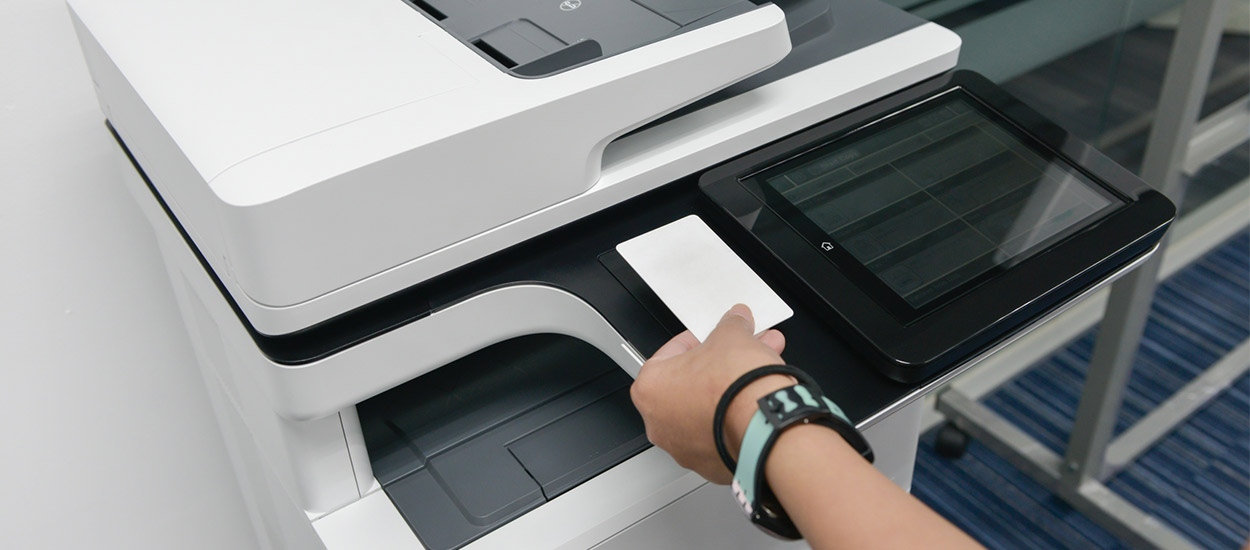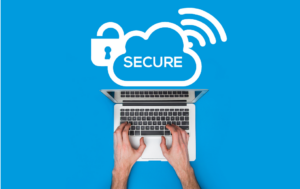Pull Printing: Why Isn’t it in Widespread Use – Yet?

Pull Printing with user authentication saves paper and toner costs and ensures greater data security
It helps protect the environment, saves money and protects data – pull printing. What is it? Basically, a print job is stored on the server or workstation after the print command has been triggered. The printout doesn’t start until the user authenticates himself directly at the printer.
The consequences include fewer printouts and therefore less waste of toner and paper, ultimately meaning far lower costs and protected resources. In addition, printouts, some of which contain sensitive data, cannot fall into the wrong hands. Actually, these are several good reasons why every company should be using secure pull printing. Especially with regard to the General Data Protection Regulation (GDPR), the introduction of pull printing is an appropriate strategy.
So why has pull printing not yet established itself across the board? On the one hand, there are still enough organizations willing to use individual printers sitting on their employees’ desks. These do not require pull printing, but their printing infrastructure should be checked, but that’s another subject.
Challenges when introducing pull printing
I think that for many others, the following three reasons are often inhibitors to finally tackling the issue:
- Costs for printers which have to be newly acquired
- Costs associated with the implementation
- Fear that it is impractical or difficult for users
I want to debunk all three of these reasons or give you at least a new perspective on pull printing.
Do I have to buy new printers for pull printing?
Depending on the technology used, it may be necessary to purchase new printers, as only certain models can support pull printing. At least our software solution however supports all network printers of all printer manufacturers, either by authentication directly with smartphones or tablets or with a small additional piece of hardware, which makes every printer pull-printing-capable. This allows the entire printer inventory fleet to be made pull-printable, either without or at low cost for additional hardware. This fully eliminates the need to purchase new printers.
How much effort is involved in implementation?
When assessing the effort involved in implementing such a system, one should bear in mind above all that pull printing, once implemented, will significantly reduce the workload of IT administrators. For example, printers no longer have to be laboriously shared with different users and user groups. And there is virtually no effort in terms of print management when new workstations are set up or new printers are installed.
The implementation itself can also be made very easy. With our release station, for example, employees can simply log on once to the pull-printing system. They can even use all kinds of cards that they already use, such as credit or customer cards. Everyone can use a different type of card. The employee simply goes to a printer, swipes his card over the reader and receives a printout with a registration code which he scans or types in to register once. Done. The administrator doesn’t have to issue and set up cards. And this also works with any printer model.
How user-friendly is pull printing?
The fear that it might be cumbersome and too slow for the user to always log on to the printer to pick up print jobs is difficult to counterargue. You should test this live however. Correctly set up, printing is far faster than you think, and swiping a card at the printer quickly becomes routine.
Here too, the positive effects of pull printing should be considered. Employees can simply go to the next device to pick up their print job when a printer is busy or defective. Employees can no longer accidentally print to the wrong printer, no longer need to hurry to delete print jobs that they have sent out incorrectly… All this contributes significantly to user acceptance. Why not take advantage of a test phase in which users can optionally use pull printing? You will be amazed at how well it’s received. The environment is just as easy on your wallet as your users. You can find out more on our pull-printing solution, Personal Printing, on our website. Here you will also find a free 30-day trial version.




